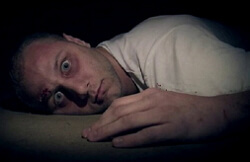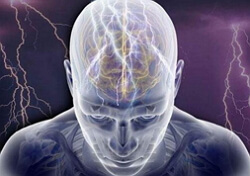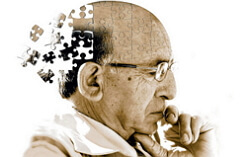History of schizophrenia
 The history of the study of schizophrenia has a long history and is of incredibly great interest for doctors in all respects. This is the most common disease among patients entering psychiatric hospitals. The very word schizophrenia denotes from Greek - splits the mind, which is understood as disorganization, as well as the lack of harmony, illogicality and inconsistency in terms of understanding ordinary people. Schizophrenia causes severe mental changes, characterized by a decline, an incurable state of dementia and complete disability.
The history of the study of schizophrenia has a long history and is of incredibly great interest for doctors in all respects. This is the most common disease among patients entering psychiatric hospitals. The very word schizophrenia denotes from Greek - splits the mind, which is understood as disorganization, as well as the lack of harmony, illogicality and inconsistency in terms of understanding ordinary people. Schizophrenia causes severe mental changes, characterized by a decline, an incurable state of dementia and complete disability.
The first description of schizophreniform signs and symptoms appeared at the beginning of 2000 BC and is mentioned in the book of the most ancient Egyptian papyrus Ebers.
Studying ancient Greek and Roman sources, one can find that scientists of that time were sufficiently aware of mental disorders of personality, but there are no descriptions that would satisfy today's criteria for schizophrenia.
Simultaneously, signs and symptoms responding to schizophrenia were seen in Arab medical as well as psychological texts that date back to the Middle Ages.
Despite the general concept of insanity that exists for thousands of years, only in 1893 schizophrenia was put into an independent emotional disorder by Emil Krepelin. His merit in the history of schizophrenia is that he first traced the line between psychotic disorders and manic depression.
The history of schizophrenia has changed dramatically since 1908, when Eigen Bleuler( Swiss psychiatrist) described schizophrenia, introducing the term into psychiatry, referring to it as an independent disease that is fundamentally different from dementia-acquired dementia. His merits are that he proved the existence of the disease not only in the young years of people, but also in adulthood. A distinctive feature is not dementia, but features such as a violation of unity in the psyche, as well as violations at the level of associative thinking. Bleuler emphasized the following diagnostic criteria: decreased affect, autism, association disorder, and ambivalence.
He attributed ambivalence to the main symptom of schizophrenia, which he divided into three types: emotional, volitional, intellectual.
Emotional ambivalence combines a positive as well as a negative feeling for an event, a person, an object.
Will ambivalence includes endless tormenting fluctuations between opposing decisions, as well as the inability to choose between them and ultimately leading to the abandonment of a concrete decision in general.
Intellectual ambivalence consists in the alternation, as well as the simultaneous existence of mutually exclusive and contradictory ideas of reasoning.
There have been changes in the history of schizophrenia when Bleuler proposed dividing the disease into four subgroups: paranoid, hebephrenic, catatonia, and simple schizophrenia. But most often by Bleuler, latent schizophrenia is mentioned. He honestly admitted that he was unaware of the nature of the schizophrenic process. Further, studying the initial symptomatology, he believes that the course of the disease is less predictable, and also difficult to predict for the future.
World War I brought the problem of schizophrenia to a climax.
The history of schizophrenia is filled with new philosophical systems, new methods of treatment, which leads to the flourishing of psychoanalysis. Bleuler applies psychoanalysis as an explanatory theory for describing a group of schizophrenic psychoses, without mentioning it as a therapeutic tool.
In 1917, the world was shaken by two epidemics: the Spanish, and also lethargic encephalitis, which is also called sleep disorder, characterized by acute hallucinatory delirium. It is believed that lethargic encephalitis is directly related to schizophrenia. At the same time, methods of treating schizophrenia were developed. The same period caused interest in the treatment of schizophrenia with sleep.
Since 1921, physician Jacob Cliesy has been using barbiturates to relieve schizophrenic patients from automatisms. But this method did not take root, because it was dangerous because of a possible overdose and in 1925 out of 311 treated patients die 15.
Since 1930, barbiturates have been replaced with a less toxic hypnotic, containing barbituric paraldehyde amylengydrate, and cholalhydrate. Even then, experts began to suspect that from barbituric derivatives there is heavy substance abuse and, despite this, the drug continues to be used for another half-century.
The history of schizophrenia since 1933 is filled with a new discovery. Manfred Shekel presented to the Vienna Medical Society the result of his work on hypoglycemic shocks, which can have a beneficial effect on the mental state of people with schizophrenia. After a while, the concept of schizophrenia was officially recognized by all psychiatrists around the world, it remained to find out the signs for diagnosis, as well as the causes of the onset of the disease and how to properly treat it. What scientists are doing to this day.
The first half of the twentieth century, schizophrenia was associated with a hereditary defect, and patients in many countries became victims of manipulation of eugenic advocates. Thousands of people were sterilized in the US, Nazi Germany, and also in the Scandinavian countries. Many patients with schizophrenia became victims of the Nazi killing program with the stigma of "mental unfitness".
In 1950, Manfred Sheckel concludes that it is the insulin shock that has a real therapeutic effect on patients with schizophrenia.
Further in the history of schizophrenia, a Hungarian researcher from Hungary Laszlo van Medun appears who suggested the following method for treating the disease: causing seizures in a patient with camphor injections, and subsequently with injections of cordiazol or pentylenetrazole. In 1937, Laszlo van Medun summed up and published the work "Convulsive Therapy of Schizophrenia."
Simultaneously with the Hungarian researcher, the Roman professor Lucio Bini along with assistant Hugo Kerletti began to use electricity for convulsions.
In the history of schizophrenia, the first patient appears who has received remission after undergoing electric shock treatment.
Of particular importance in the history of schizophrenia are attempts to treat the method of psychosurgery, which scientists have undertaken. Since 1888, the first experiments in this field are starting, which belong to Gottlieb Burchardt. In 1935, the International Congress of Neurologists was held in London, where one of the reports was devoted to the physiology of the frontal lobes. Further significant results in psychosurgery were achieved by the Portuguese neurologist Egas Moniz, but his methods were not widely used in the treatment of schizophrenia.
The history of schizophrenia has expanded from the biochemical era, which began in 1952.This year was marked by the discovery of neuroleptics.
During the Second World War, French doctors used the derivative prometazine, as well as phenothiazine. Its effect on the patients was sedative. A little later in 1950 in the treatment of schizophrenia begin to use another drug, called Largaktil. Applying it in anesthesia, it was observed that the drug has a specific effect on the psyche. Patients become indifferent and indifferent. The mechanism of action of antipsychotics allowed to reduce the severity of hallucinatory-delirious symptoms, but with side effects, further treatment was at a dead end. But nevertheless, the doctors had confidence in the healing of patients who acquired over time expressed human traits.
Diagnostic descriptions of the disease began to change over time, and after an American-British study in 1971 it became clear that schizophrenia was diagnosed in the US more often than in Europe.
The history of schizophrenia in the 80s was enlarged by the discovery of atypical neuroleptics. This finding facilitated the positive as well as negative symptoms of the disease. Their selective effect was broad on the range of symptoms of schizophrenia and was much more easily tolerated, which greatly facilitated the life of the mentally ill. These properties served to the fact that they began to be prescribed all over the world for the treatment of schizophrenia.
More articles on this topic:
1. Schizophrenia in men 2. Schizophrenia in women



